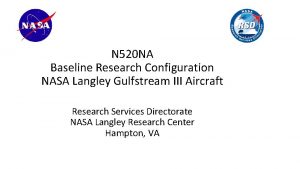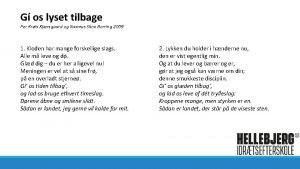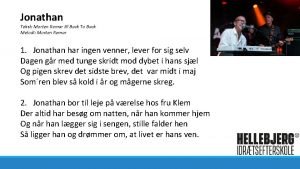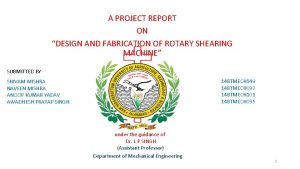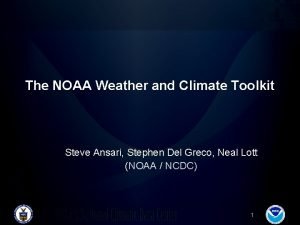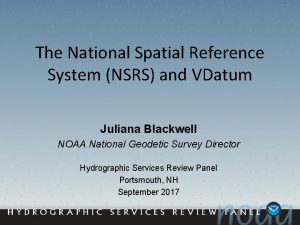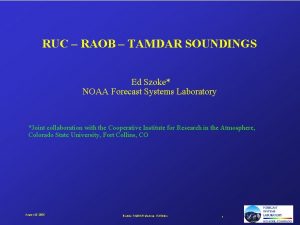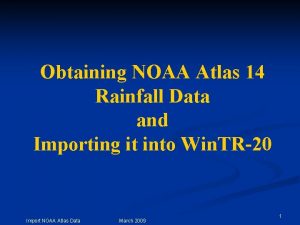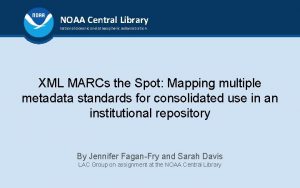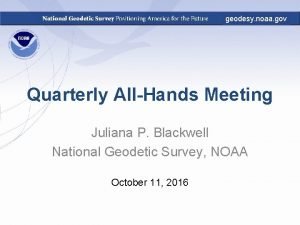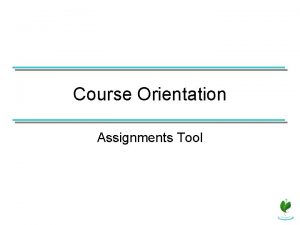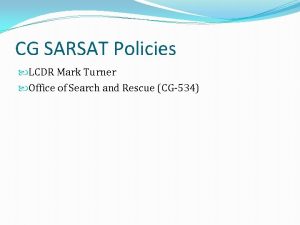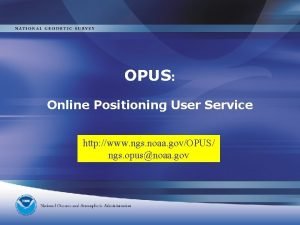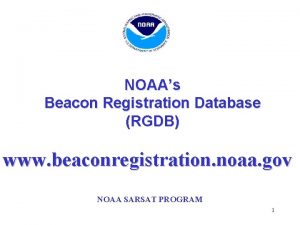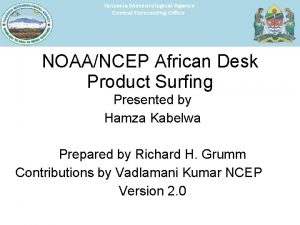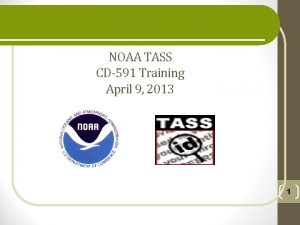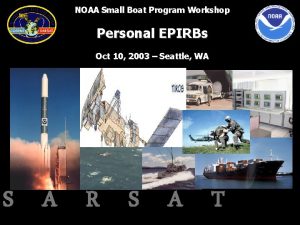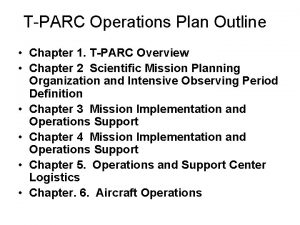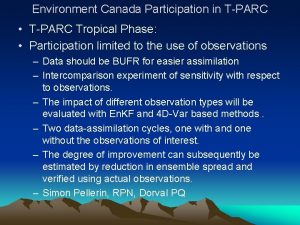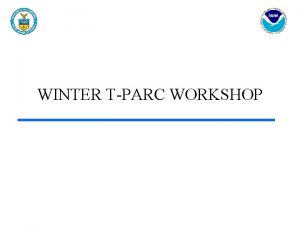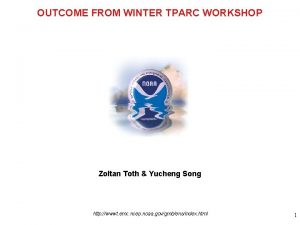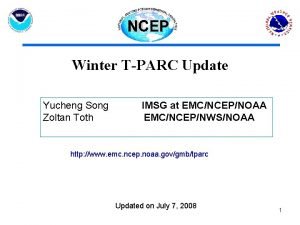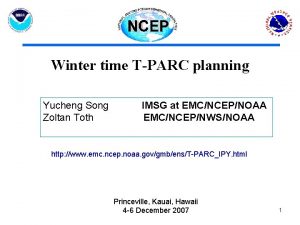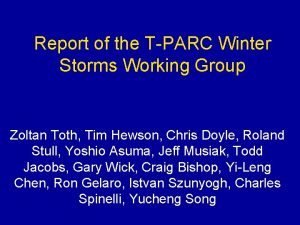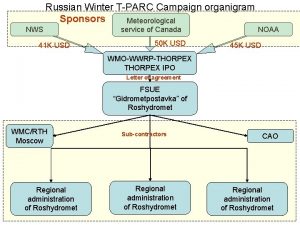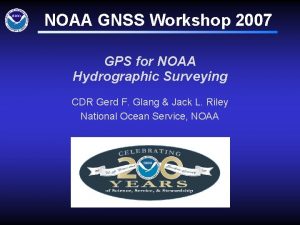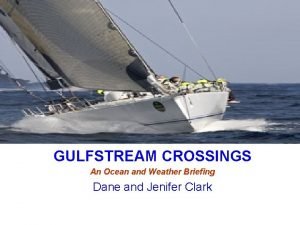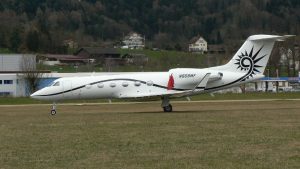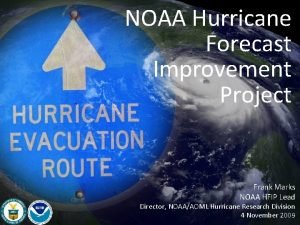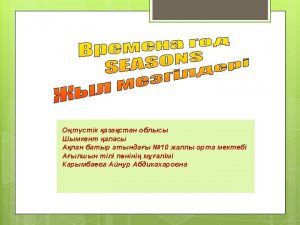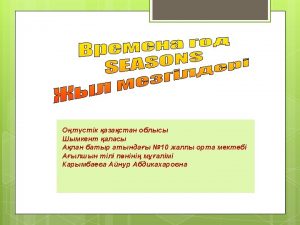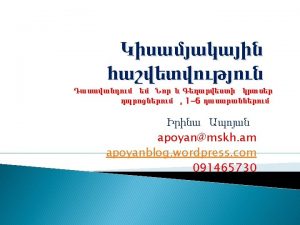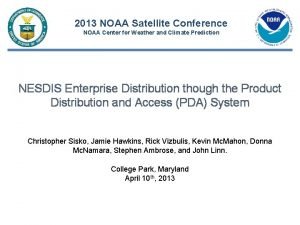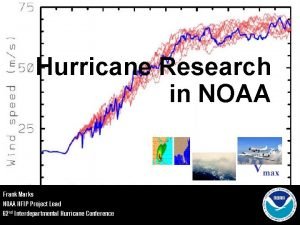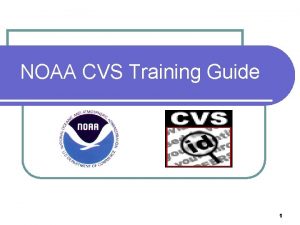NOAA Gulfstream GIV SP Winter TPARC workshop Project


























- Slides: 26

NOAA Gulfstream G-IV SP Winter T-PARC workshop Project Manager: Jack Parrish Aircraft Commanders: CDR Jeff Hagan, CDR Will Odell Scientific Systems Analyst: Mark Rogers 1

Gulfstream G-IV SP Capabilities N 49 RF - MISSIONS • Hurricane Surveillance • Winter Storms • Hurricane Research • Air Chemistry Cabin Configuration • Initial Altitude – 41, 000’ • Max Altitude – 45, 000’ • Mission Speed -. 77 Mach • Transit Speed -. 83 Mach • Mission Endurance – 8. 0 Hrs • Twin Turbofan Jet • Mission Track Miles – 3, 600 NM • 10 total seats • 3 Cockpit • 7 Cabin • 1 Flight Director • 3 Technicians • Up to 3 Scientists 2

Winter T-PARC Calendar • October 8 -10: Winter T-PARC workshop • November 3 -7: Site visit to Yokota AFB • January 7: G-IV departs for Yokota AFB, RON Anchorage • January 9: G-IV arrives Yokota • February 28/27: Depart Yokota AFB, arrive Honolulu ~ March 31: G-IV departs for Mac. Dill AFB 3

G-IV Winter T-PARC Operations • Plan to fly about the 12 Z runs. 06 Z launches, land by 15 Z. • Two day ahead alerts and areas of interest. Two day warning of deployments. • One day ahead planned tracks. • Mid-flight changes are possible. Plan on 20 -30 minutes of delay due to communication relays and language barrier. • 6 -day in a row standby, flight limit. 4

Aircraft/Aircrew Safety • Two 13 Person Life Rafts • Anti-Exposure suits for all crew members • Automated External Defibrillator (AED) on board – crew members trained • Aviation Survival Vests (SWITLIKS) for all crew members • Fixed Emergency Oxygen for all crew members plus walk around bottles • Flight crew trained in Aviation Physiology including pressure chamber • Flight crew attends flight simulator training twice a year • AOC crew members trained in water survival and cold weather survival • Outstanding Safety record – No flight fatalities ever! 5

Safety Requirements for Visiting PAX Visiting scientists, distinguished visitors, and media are allowed 1 flight aboard NOAA aircraft without fulfilling the training requirements that are dictated in the chart linked below. If any of these people would like to fly more than once (in a year) then the training must be completed. This Aviation Safety Program is administered by NOAA’s Office of Marine and Aviation Operations (OMAO), the parent NOAA organization of the Aircraft Operations Center (AOC). http: //www. omao. noaa. gov/aviationsafety/safety. html 6

NOAA Safety Training 7

8

9

10

11

Yokota AB, Japan 12

13

14

T-PARC Flight Operations 15

T-PARC Area of Operations 16

T-PARC G-IVSP Capabilities 17

Gulfstream G-IV SP Capabilities Data System • Main aircraft data system provides a flight level data stream at 1 Hz to multiple stations through a GUI format Scientific Systems Communication Systems • Inmarsat/Iridium • Voice/Data capabilities • Internet acces • UHF/VHF/HF radios • X-chat • Flight Level Data • Dropwindsondes PTH Wind Speed/Direction • Stepped Frequency Microwave Radiometer (SFMR) – Surface Wind Speed (experimental) 18

T-PARC G-IVSP Capabilities 19

T-PARC G-IVSP Capabilities 20

T-PARC G-IVSP Capabilities 21

T-PARC G-IVSP Capabilities 22

Tail Doppler Radar 23

24

DLR Falcon observations • Make two-day ahead “area of interest” fairly broad. No great expectation of accuracy. • One-day ahead plan as good as possible. At least first few points need to be good. • In-the-air changes are possible. HF/Air. Inc comms, relays will cause 20 -30 minute delays. • Seek traffic advisories from ATC. That and TCAS warnings of traffic below will be used to evaluate drop locations. • Expect departure, approach delays. They were kept low (5 K feet) 60 -80 miles from base. It could shorten our total tracks. • Make use of usual ICAO/military-style flight planning forms. They will provide us examples of what they used. • Falcon crew used multiple-recipient fax cover to distribute plans to various sectors. Again, they will provide contact information. • DLR did not request block altitude clearances. We’ll check during the site visit. • Customs, immigration, agriculture and quarantine took 45 minutes to an hour upon entry. Might have been extra since they were arriving from Russia. 25

26
 Noaa.giv
Noaa.giv Nasa520
Nasa520 Gulfstream
Gulfstream Noaa ai workshop
Noaa ai workshop Giv os lyset tilbage tekst
Giv os lyset tilbage tekst Madpakkeland
Madpakkeland Swift og franzen
Swift og franzen Winter kommt winter kommt flocken fallen nieder
Winter kommt winter kommt flocken fallen nieder Heute mittwoch guten morgen mittwoch winter
Heute mittwoch guten morgen mittwoch winter Was ist deine lieblingsjahreszeit
Was ist deine lieblingsjahreszeit Project report on fabrication workshop
Project report on fabrication workshop Noaa toolkit
Noaa toolkit Vdatum noaa
Vdatum noaa Noaa ruc soundings
Noaa ruc soundings Noaa atlas 14
Noaa atlas 14 Noaa grants online
Noaa grants online Noaa central library
Noaa central library Noaa time and attendance
Noaa time and attendance Noaa enc charts
Noaa enc charts Noaa corps cpc
Noaa corps cpc Ihdb noaa
Ihdb noaa Noaa vlab
Noaa vlab Ngs opus
Ngs opus Beacon registration noaa
Beacon registration noaa Noaa africa desk
Noaa africa desk Noaa cac card
Noaa cac card Locator beacons
Locator beacons

